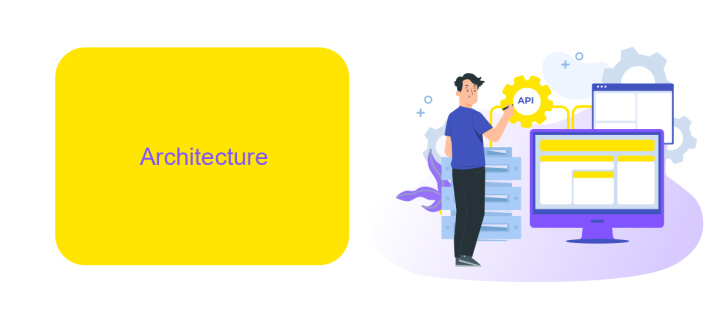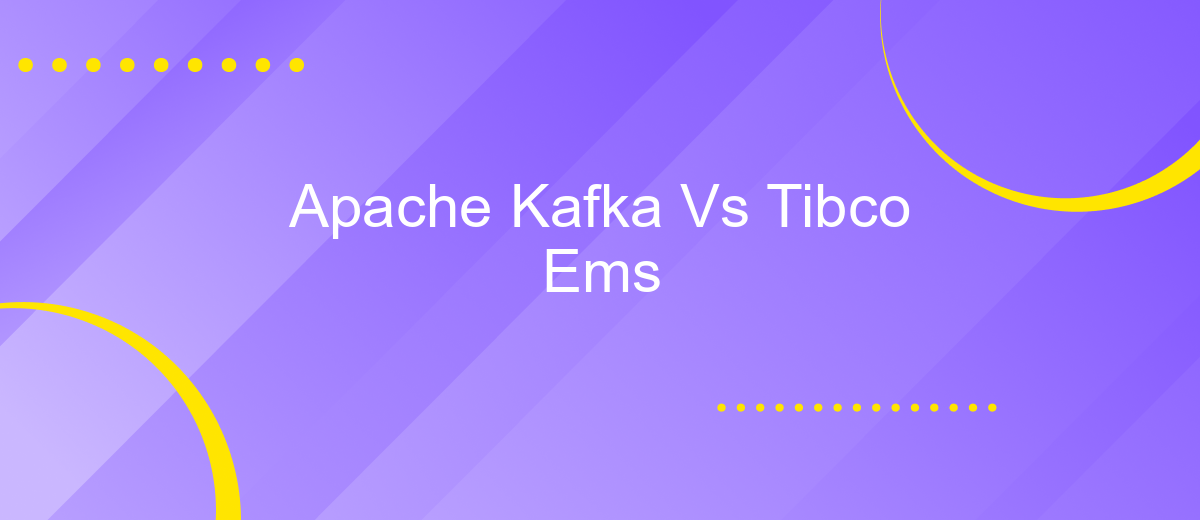Apache Kafka Vs Tibco Ems
In the world of messaging systems, Apache Kafka and TIBCO EMS stand out as powerful tools for data streaming and enterprise messaging. This article delves into a comparative analysis of these two technologies, examining their core features, performance, and use cases. Whether you're an IT professional or a business decision-maker, understanding their differences can help you choose the right solution for your needs.
Introduction
In the ever-evolving landscape of data streaming and messaging, choosing the right platform can significantly impact your business operations. Apache Kafka and Tibco EMS are two prominent solutions that cater to different needs and use cases. Understanding their strengths and weaknesses is crucial for making an informed decision.
- Apache Kafka: Known for its high throughput, scalability, and fault tolerance, Kafka is an ideal choice for real-time data streaming and event-driven architectures.
- Tibco EMS: Renowned for its enterprise-grade messaging capabilities, Tibco EMS excels in secure, reliable, and transactional message delivery, making it suitable for mission-critical applications.
While both platforms offer robust features, integrating them with existing systems can be challenging. Services like ApiX-Drive simplify this process by providing seamless integration solutions, allowing businesses to automate workflows and enhance productivity. By leveraging such tools, organizations can maximize the benefits of their chosen messaging platform.
Architecture

Apache Kafka is built around a distributed architecture that allows it to handle high-throughput and low-latency data streams. It uses a publish-subscribe model where producers send messages to topics, and consumers read messages from these topics. Kafka's architecture includes brokers that manage message storage and retrieval, ensuring fault tolerance and scalability. The system is designed to be horizontally scalable, allowing new nodes to be added to the cluster without downtime. Kafka also supports stream processing through Kafka Streams, enabling real-time data processing directly within the Kafka cluster.
Tibco EMS (Enterprise Message Service) follows a more traditional messaging architecture, using a centralized message broker to manage the communication between producers and consumers. It supports various messaging models, including point-to-point and publish-subscribe. Tibco EMS is designed to ensure message delivery and supports features like message persistence, transactions, and load balancing. While it is robust and reliable, it may require more complex setup and maintenance compared to Kafka. For integrating these systems with other applications, services like ApiX-Drive can be utilized to streamline and automate the integration process, reducing the complexity and time required for configuration.
Features

Apache Kafka and Tibco EMS are both powerful messaging systems, each with unique features that cater to different use cases. Kafka is known for its high throughput, scalability, and fault tolerance, making it ideal for real-time data processing. On the other hand, Tibco EMS excels in enterprise messaging with robust support for various messaging protocols and guaranteed delivery.
- Throughput and Scalability: Kafka can handle millions of messages per second with minimal latency, while Tibco EMS is designed for high reliability and consistent performance.
- Integration Capabilities: Both platforms offer extensive integration options, but Kafka's ecosystem includes connectors for popular data sources. Tibco EMS integrates seamlessly with other Tibco products and enterprise systems.
- Fault Tolerance: Kafka's distributed architecture ensures data durability and fault tolerance, whereas Tibco EMS provides robust failover mechanisms and high availability.
For businesses looking to streamline their integrations, services like ApiX-Drive can be invaluable. ApiX-Drive simplifies the process of connecting Kafka or Tibco EMS with other applications, ensuring seamless data flow and operational efficiency. Whether you need real-time analytics or reliable enterprise messaging, both Kafka and Tibco EMS offer compelling features to meet your needs.
Use Cases

Apache Kafka and Tibco EMS are both powerful tools used in different scenarios within various industries. Kafka is renowned for its ability to handle real-time data streams and is often employed in applications that require high throughput and low latency. On the other hand, Tibco EMS excels in scenarios where reliable message delivery and enterprise-level integration are crucial.
Use cases for Kafka typically involve high-volume data processing and real-time analytics. It is widely used in sectors like finance, telecommunications, and e-commerce to manage data streams and event sourcing. Tibco EMS, however, is preferred in environments where transactional integrity and guaranteed message delivery are essential, such as in banking, healthcare, and supply chain management.
- Real-time data analytics and monitoring
- Event-driven architectures
- Enterprise-level message queuing and integration
- Transactional data processing
For businesses looking to integrate these systems seamlessly, services like ApiX-Drive can be invaluable. ApiX-Drive simplifies the integration process by providing easy-to-use tools that connect various applications and automate workflows, ensuring smooth and efficient operations.
Conclusion
In conclusion, both Apache Kafka and Tibco EMS offer robust solutions for message-oriented middleware, each with its unique strengths. Apache Kafka excels in handling high-throughput, real-time data streams, making it ideal for big data applications and real-time analytics. Its distributed architecture ensures fault tolerance and scalability, which are critical for modern data-driven enterprises. On the other hand, Tibco EMS provides a more traditional approach to messaging with strong support for JMS standards and enterprise-level features like transaction management and security, making it suitable for legacy systems and complex enterprise environments.
Choosing between Apache Kafka and Tibco EMS largely depends on your specific use case and infrastructure requirements. For organizations looking to streamline their integration processes, services like ApiX-Drive can offer valuable assistance. ApiX-Drive simplifies the integration of various applications and services, ensuring seamless data flow and reducing the complexity of managing multiple systems. Ultimately, the decision should be based on the specific needs of your organization, considering factors such as scalability, ease of integration, and the nature of the data being processed.


FAQ
What are the primary use cases for Apache Kafka and Tibco EMS?
How do Apache Kafka and Tibco EMS handle message durability?
Can Apache Kafka and Tibco EMS be used together in a single architecture?
How do Apache Kafka and Tibco EMS differ in terms of scalability?
What are the options for automating and integrating Apache Kafka and Tibco EMS?
Time is the most valuable resource in today's business realities. By eliminating the routine from work processes, you will get more opportunities to implement the most daring plans and ideas. Choose – you can continue to waste time, money and nerves on inefficient solutions, or you can use ApiX-Drive, automating work processes and achieving results with minimal investment of money, effort and human resources.

